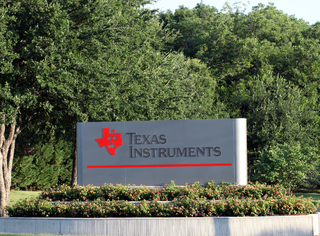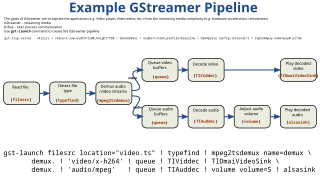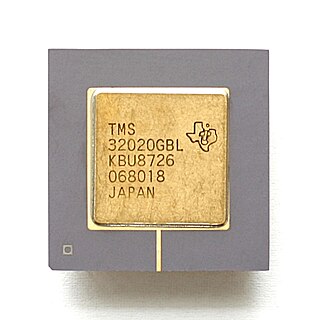
Texas Instruments Incorporated (TI) is an American semiconductor company headquartered in Dallas, Texas that designs and manufactures semiconductors and various integrated circuits. It is one of the top 10 semiconductor companies worldwide based on sales volume. The company's focus is on developing analog chips and embedded processors, which account for more than 80% of its revenue. TI also produces TI digital light processing technology and education technology products including calculators, microcontrollers, and multi-core processors. The company holds 45,000 patents worldwide as of 2016.
Enea AB is a global information technology company with its headquarters in Kista, Sweden that provides real-time operating systems and consulting services. Enea, which is an abbreviation of Engmans Elektronik Aktiebolag, also produces the OSE operating system.

GStreamer is a pipeline-based multimedia framework that links together a wide variety of media processing systems to complete complex workflows. For instance, GStreamer can be used to build a system that reads files in one format, processes them, and exports them in another. The formats and processes can be changed in a plug and play fashion.
Wind River Systems, also known as Wind River, is an Alameda, California–based company, subsidiary of Aptiv PLC. The company develops embedded system and cloud software consisting of real-time operating systems software, industry-specific software, simulation technology, development tools and middleware.
Reaktor is a graphical modular software music studio developed by Native Instruments (NI). It allows musicians and sound specialists to design and build their own instruments, samplers, effects and sound design tools. It is supplied with many ready-to-use instruments and effects, from emulations of classic synthesizers to futuristic sound design tools. In addition, more than 3000 free instruments can be downloaded from the growing User Library. All of Reaktor's instruments can be freely examined, customized, or taken apart; Reaktor is a tool that effectively encourages reverse engineering. The free, limited version called Reaktor Player is a software that allows musicians to play NI-released Reaktor instruments, but not edit or reverse-engineer them.

The OMAP family, developed by Texas Instruments, was a series of image/video processors. They are proprietary system on chips (SoCs) for portable and mobile multimedia applications. OMAP devices generally include a general-purpose ARM architecture processor core plus one or more specialized co-processors. Earlier OMAP variants commonly featured a variant of the Texas Instruments TMS320 series digital signal processor.

TMS320 is a blanket name for a series of digital signal processors (DSPs) from Texas Instruments. It was introduced on April 8, 1983 through the TMS32010 processor, which was then the fastest DSP on the market.

A multi-core processor is a microprocessor on a single integrated circuit with two or more separate processing units, called cores, each of which reads and executes program instructions. The instructions are ordinary CPU instructions but the single processor can run instructions on separate cores at the same time, increasing overall speed for programs that support multithreading or other parallel computing techniques. Manufacturers typically integrate the cores onto a single integrated circuit die or onto multiple dies in a single chip package. The microprocessors currently used in almost all personal computers are multi-core.
Atmel ARM-based processors are microcontrollers and microprocessors integrated circuits, by Microchip Technology, that are based on various 32-bit ARM processor cores, with in-house designed peripherals and tool support.

The Texas Instruments DaVinci is a family of system on a chip processors that are primarily used in embedded video and vision applications. Many processors in the family combine a DSP core based on the TMS320 C6000 VLIW DSP family and an ARM CPU core into a single system on chip. By using both a general-purpose processor and a DSP, the control and media portions can both be executed by separate processors.

A microprocessor development board is a printed circuit board containing a microprocessor and the minimal support logic needed for an electronic engineer or any person who wants to become acquainted with the microprocessor on the board and to learn to program it. It also served users of the microprocessor as a method to prototype applications in products.
iZotope, Inc. is an audio technology company based in Cambridge, Massachusetts, United States. iZotope develops professional audio software for audio recording, mixing, broadcast, sound design, and mastering which can be used in wide range of digital audio workstation (DAW) programs. In addition, iZotope creates and licenses audio DSP technology including noise reduction, sample rate conversion, dithering, time stretching, and audio enhancement to hardware and software companies in the consumer and pro audio industries.

Code Composer Studio is an integrated development environment to develop applications for Texas Instruments embedded processors.
TI-RTOS is an embedded tools ecosystem created and offered by Texas Instruments (TI) for use across a range of their embedded system processors. It includes a real-time operating system (RTOS) component named TI-RTOS Kernel, networking connectivity stacks, power management, file systems, instrumentation, and inter-processor communications like DSP/BIOS Link. It is free and open-source software, released under a BSD license.

The BeagleBoard is a low-power open-source single-board computer produced by Texas Instruments in association with Digi-Key and Newark element14. The BeagleBoard was also designed with open source software development in mind, and as a way of demonstrating the Texas Instrument's OMAP3530 system-on-a-chip. The board was developed by a small team of engineers as an educational board that could be used in colleges around the world to teach open source hardware and software capabilities. It is also sold to the public under the Creative Commons share-alike license. The board was designed using Cadence OrCAD for schematics and Cadence Allegro for PCB manufacturing; no simulation software was used.

Arm Holdings plc is a British semiconductor and software design company based in Cambridge, England, whose primary business is the design of central processing unit (CPU) cores that implement the ARM architecture family of instruction sets. It also designs other chips, provides software development tools under the DS-5, RealView and Keil brands, and provides systems and platforms, system-on-a-chip (SoC) infrastructure and software. As a "holding" company, it also holds shares of other companies. Since 2016, it has been majority owned by Japanese conglomerate SoftBank Group.
The IGEPv2 board is a low-power, fanless single-board computer based on the OMAP 3 series of ARM-compatible processors. It is developed and produced by Spanish corporation ISEE and is the second IGEP platform in the series. The IGEPv2 is open hardware, licensed under a Creative Commons Attribution-Non Commercial-ShareAlike 3.0 unported license.

The PandaBoard was a low-power single-board computer development platform based on the Texas Instruments OMAP4430 system on a chip (SoC). The board has been available to the public at the subsidized price of US$174 since 27 October 2010. It is a community supported development platform.

The Sitara Arm Processor family, developed by Texas Instruments, features ARM9, ARM Cortex-A8, ARM Cortex-A9, ARM Cortex-A15, and ARM Cortex-A53 application cores, C66x DSP cores, imaging and multimedia acceleration cores, industrial communication IP, and other technology to serve a broad base of applications. Development using Sitara processors is supported by the open source Beagle community as well as Texas Instruments' open source development community.

The Proteus Design Suite is a proprietary software tool suite used primarily for electronic design automation. The software is used mainly by electronic design engineers and technicians to create schematics and electronic prints for manufacturing printed circuit boards.














